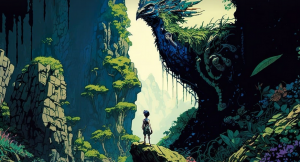Unboxing the Intrigue: A Journey Through Suzanne Collins’ Original Masterpiece
Remember that first time you picked up that iconic Mockingjay symbol, its bold black lettering promising a thrilling escape into Panem? It was more than just an ordinary book; it was a portal to a dystopian world unlike any other. The Hunger Games trilogy, penned by the brilliant Suzanne Collins, transcended mere fiction and ignited a global phenomenon. Today, we’re diving deep into the fascinating realm of first edition Hunger Games books, exploring the unique allure they hold for discerning readers and collectors alike. Why are these initial publications so captivating? For starters, imagine holding the very book that sparked countless debates, fueled fervent discussions, and inspired countless generations to dream about a world where rebellion was not just a possibility but a necessity. Each page whisper tales of Katniss Everdeen’s resilience, Peeta Mellark’s unwavering hope, and Rue’s innocent spirit. First edition Hunger Games books carry the weight of historical significance. The text itself, untouched by mass-produced versions, offers an intimate glimpse into the genesis of a story that resonated across language barriers. It’s not simply about reading words on paper; it’s about experiencing the pulse of creation, the original spark ignited in Suzanne Collins’ mind as she crafted her characters and their world. The physical embodiment of the book is equally compelling. Imagine opening a first edition copy with its textured cover, the spine worn gently from frequent reads or cherished rereads, each crease telling a story of its own. The pages themselves, often thick and sturdy, possess a unique texture that transports you back to Collins’ creation. First editions offer a rare opportunity to connect intimately with a work of art as it was conceived. They embody the raw energy of the imagination at the time of publication—the very essence of what made those early pages so captivating. It’s not just about reading the story; it’s about understanding its origins and the artistic choices Collins made in those initial drafts, shaping a world that endures to this day. Beyond their intrinsic value, first editions are treasured for their rarity and historical significance. Imagine holding a piece of literary history—a tangible reminder of a moment when imagination captured the heart of countless readers and sparked a cultural revolution. The very existence of these first edition books is testament to the enduring impact of Suzanne Collins’ writing. Let’s delve deeper into the specifics that make first editions so unique: **The Cover Art:** First edition covers often stand out with their distinct artwork, capturing the essence of the story’s tone and characters in a way that mass-produced versions rarely achieve. The intricate detail and evocative imagery add a layer of visual storytelling that elevates the reading experience. **The Binding:** A first edition’s binding is another element that sets them apart. They often feature high-quality materials like cloth or leather, giving the book an air of prestige. This attention to detail speaks volumes about the publisher’s commitment to quality and lasting appeal.
**The Inside Pages:** The very paper used for printing first edition books can be a testament to their age—often featuring unique textures and a slightly different weight than later editions. **A Collector’s Perspective:** First editions serve as more than just reading materials; they are valuable assets for collectors, especially those who seek authenticity and historical significance. The process of acquiring them requires dedication, research, and understanding the market complexities. For most readers, owning a first edition book is more than simply fulfilling a personal desire for a cherished possession—it’s about connecting with a cultural phenomenon that continues to resonate with generations. It’s about celebrating the power of storytelling, and appreciating the enduring legacy of Suzanne Collins’ work. First edition Hunger Games books are not just artifacts; they are windows into the past, whispers from a time when imagination reigned supreme. They offer more than just entertainment—they hold the essence of a cultural phenomenon that continues to captivate our hearts and minds.
**Beyond the Pages:** Looking for first editions can be a fun journey in itself! You might find yourself exploring online marketplaces, attending local book fairs or even visiting rare book stores where you can delve into this historical treasure trove.
**A Timeless Legacy:** The Hunger Games series will continue to inspire generations. First editions offer a tangible link to the story’s origins and allow readers to delve into its fascinating history
**Tips for Finding First Edition Books:** * **Search Online Marketplaces:** Sites like eBay, Abebooks, or even Amazon can help you locate first edition books based on your specific needs. * **Visit Local Book Stores:** Many local bookstores specialize in rare and antique books, offering a curated collection of first editions from various publishers. * **Attend Book Fairs and Conventions:** These events attract book enthusiasts and collectors looking to trade or purchase unique items Remember that the real magic lies not just in owning these books but also in experiencing the stories within them.
**Ultimately, owning a first edition Hunger Games book is a privilege, a testament to the enduring power of great storytelling. They are a reminder that the most impactful stories leave their mark on time and history itself.















